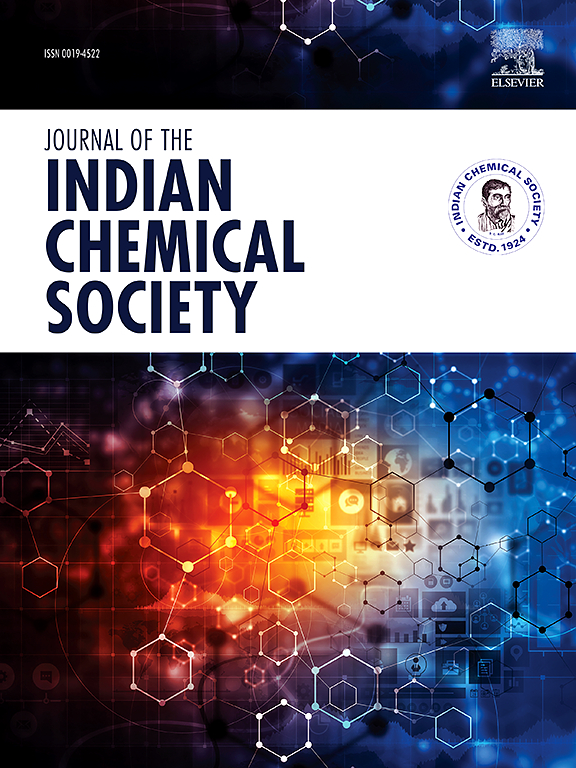建立了一种有效的HS-GC-MS分析方法,用于定量纳米结构制剂中氧化芳樟醇异构体
IF 3.4
4区 化学
Q2 CHEMISTRY, MULTIDISCIPLINARY
引用次数: 0
摘要
氧化芳樟醇(LOX)是一种单萜类化合物,存在于各种植物的精油中,可从芳樟醇中提取,在传统医学中用作镇静、镇痛、抗焦虑和催眠药。与芳樟醇不同,关于LOX及其异构体的研究很少发表。采用气相色谱-质谱顶空采样(HS-GC-MS)的分析方法,分析了基于呋喃型LOX的顺式和反式异构体混合物的纳米配方,用于治疗疼痛和炎症。该方法遵循国际分析方法统一验证委员会(ICH)中关于特异性、线性度、精密度和准确度的参数。对于同分异构体混合物,该方法在1 - 25ppm范围内呈线性(R2 >;0.99),精度和准确度高。LOX异构体1和2的检出限分别为1.22 μg mL - 1和0.51 μg mL - 1。LOX异构体1和2的定量限分别为3.71 μg mL - 1和1.54 μg mL - 1。含卡泊泊940凝胶(F-LOX- g)的纳米凝胶中液氧异构体的含量为11.05% (w/w),不含卡泊泊凝胶(F-LOX)的纳米凝胶中液氧异构体的含量为11.04% (w/w)。本文章由计算机程序翻译,如有差异,请以英文原文为准。

Development of a validated HS-GC-MS analytical method for the quantification of linalool oxide isomers in nanostructured formulations
Linalool oxide (LOX) is a monoterpenoid found in the essential oils of various plants and can be obtained from linalool, which is used in traditional medicine as a sedative, analgesic, anxiolytic and hypnotic. Unlike linalool, there are few published studies on LOX and its isomers. Nanoformulations based on a mixture of cis and trans isomers in the furanoid form of LOX indicated for the treatment of pain and inflammation were analyzed in an analytical method using Gas Chromatography coupled to Mass Spectrometry with Headspace Sampling (HS-GC-MS). The method followed the parameters described in the International Council on Harmonization, Validation of Analytical Procedures (ICH) with regard to specificity, linearity, precision and accuracy. The method developed was linear in the range of 1–25 ppm for the mixture of isomers (R2 > 0.99), with high precision and accuracy. The limit of detection values for LOX isomers 1 and 2 were 1.22 μg mL−1 and 0.51 μg mL−1, respectively. The limit of quantification values for LOX isomers 1 and 2 were 3.71 μg mL−1 and 1.54 μg mL−1, respectively. The content of LOX isomers in the nanoemulgels was 11.05 % (w/w) for the formulation with carbopol 940 gel (F-LOX-G) and 11.04 % (w/w) for the formulation without carbopol gel (F-LOX).
求助全文
通过发布文献求助,成功后即可免费获取论文全文。
去求助
来源期刊
CiteScore
3.50
自引率
7.70%
发文量
492
审稿时长
3-8 weeks
期刊介绍:
The Journal of the Indian Chemical Society publishes original, fundamental, theorical, experimental research work of highest quality in all areas of chemistry, biochemistry, medicinal chemistry, electrochemistry, agrochemistry, chemical engineering and technology, food chemistry, environmental chemistry, etc.

 求助内容:
求助内容: 应助结果提醒方式:
应助结果提醒方式:


